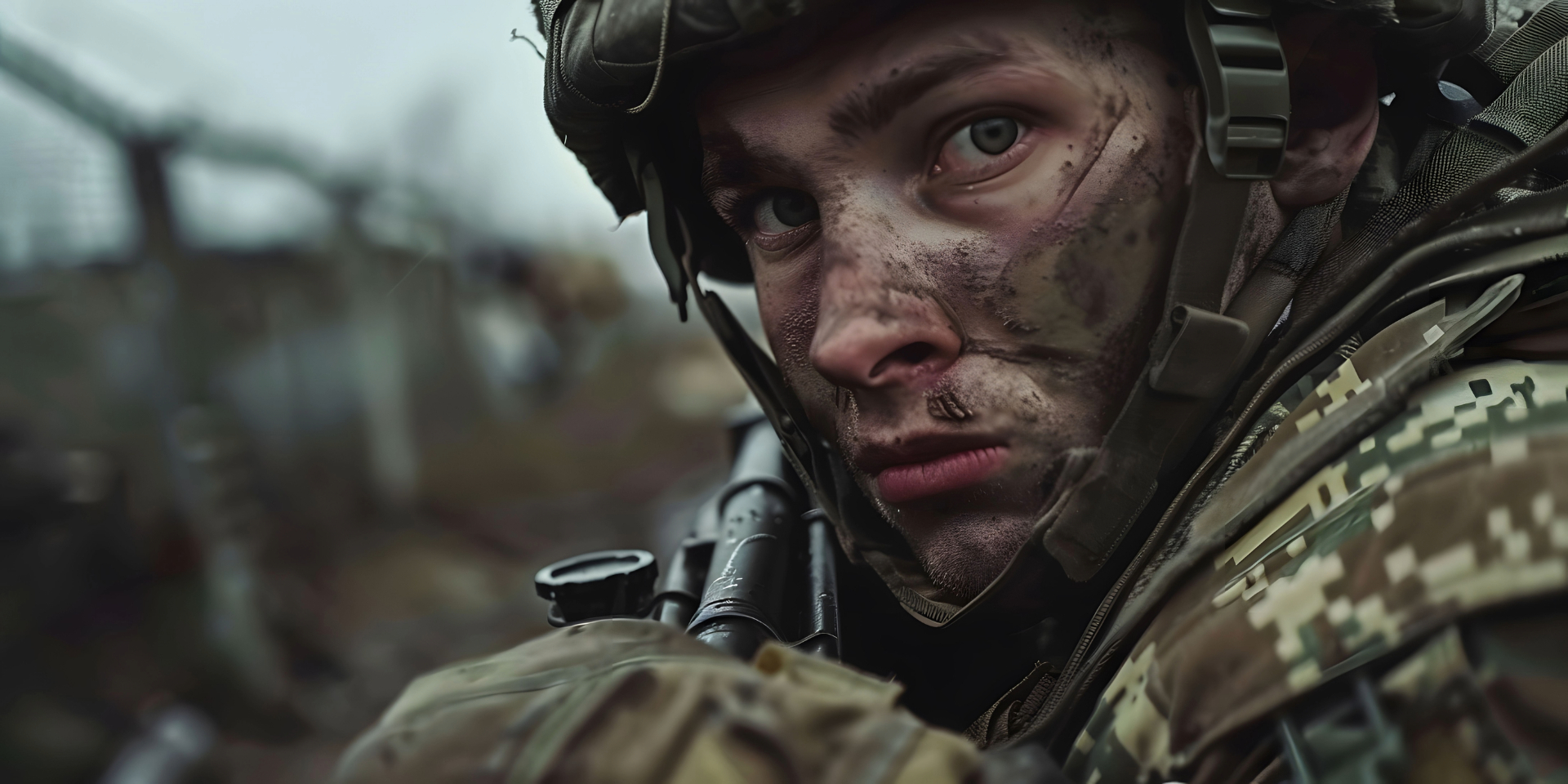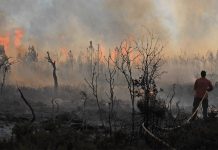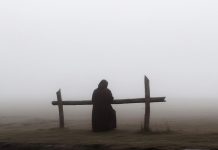When war steps out of the pages of history books and into the real world, it resonates with a harsh, cutting tone, becoming a seismic record of humanity’s darkest nightmares. The recurring faces of war’s hideous nature show that, no matter how advanced human civilization becomes, moral evil doesn’t disappear—it merely gets passed down from generation to generation, patiently waiting for the right moment to reawaken.
The theme of war, while not always at the forefront, periodically hovers in public discourse. Sometimes it does so just enough to desensitise us to the idea that it could indeed erupt near us or those we love. Other times, it serves as a reminder that the world has changed, and with it, the old strategies of conflict. Hybrid and asymmetric warfare are the new norms, even as veiled or direct nuclear threats continue to circulate among chancellors. Diplomacy, for many, remains the assurance that beyond declarations, parades, and military exercises, global leaders do not wish to disturb a peace that has endured for three-quarters of a century.
Yet, recent history, like history throughout the centuries, reveals that we have not changed much. We remain capable of the same horrors referenced in solemn, often hollow, commemorative speeches that proclaim the necessity of preventing such atrocities—“so that it never happens again,” as the now-cliché phrase goes.
World leaders, political interests, and military technology may evolve, but what remains is the inherent characteristic of war to eject life from its natural course and thrust it into a universe of nightmares.
While the tragedies of World War II were severe enough to leave a lasting impression even on generations that didn’t witness them, it is equally true that, despite the lessons we should have learned from that conflict, the spectre of a third world war has had more than enough opportunities to threaten us.
Shaping the future using the past
The Cold War, frozen at the crossroads of the United States’ and the Soviet Union’s opposing stances, provided ample reason for contemporaries to fear that this conflict might culminate in a nuclear showdown. The Cuban Missile Crisis of 1962 likely marked one of the most critical moments after 1945, encapsulating 38 days of global vertigo.
The tension in U.S.-Soviet relations reached a boiling point when an American spy plane discovered Soviet missile bases in Cuba, equipped with SS-4 medium-range missiles capable of striking targets across the southeastern United States. The death of American pilot Rudolf Anderson, whose plane was shot down while flying over Cuba, seemed to be the final drop in an already overflowing cup. Jo Fidgen, a BBC journalist, reported that both ordinary citizens and state officials feared a nuclear war was mere days or even hours away. A Gallup poll revealed that one in five Americans believed a world war was imminent. Dino Brugioni, the CIA official designated to accompany President Kennedy to the bunker, was so convinced that events were spiralling toward that end that he wrote a farewell letter to his wife. Meanwhile, U.S. Secretary of Defense Robert McNamara left his office at the end of that “Black Saturday,” uncertain whether he would witness another sunrise.
The Cuban Missile Crisis was far from an isolated moment of dissonance in the symphony of global peace. It was both preceded and followed by other critical opportunities for a large-scale war to erupt.
Analyzing the global political landscape, English journalist Roger Cohen, writing in The Atlantic, in a provocatively titled article, “Yes, it could happen again,” identifies the war in Ukraine, the conflict in Syria, and the tensions in the East China Sea as potential sources of a global conflict. Cohen cautions his readers that while there are numerous reasons to preserve peace, the unimaginable could still occur. In fact, it may already be unfolding, as evidenced by the Crimea episode, where a major power forcibly redrew boundaries that had been immutable since 1945.
Before Hitler’s expansionist and belligerent intentions gained traction on the global stage, his ideas seemed merely eccentric, disconnected from the reality in which Europe was grounded. Political leaders could not take seriously the notion of a Germanic empire built on racial foundations, especially when so much trust was placed in the prudence of the German military and political class, says Colin S. Gray, a professor of international relations and strategic studies at the University of Reading, in his book.[1]
Harry Leslie Smith, a British writer, political commentator, and veteran of World War II, reflects in an article for The Guardian on the red thread that connects the war he fought in with another, whose whispers now haunt us. Cataloguing some of the symptoms that betray the vulnerability of our world, Smith concludes that it takes only one madman to press the button of war—a condition already met since we have two, as he explicitly references the heated conflict between the U.S. and North Korea. Looking back, at the age of 94, Harry Smith recalls the last summer of peace before disaster struck, the summer of 1939, and how he and his colleagues laughed at the news about Hitler and his seemingly irrational plans in the settled world they lived in. Although he didn’t hear the thunder that foreshadowed the deluge of World War II, the political commentator believes he can hear it clearly now. And he confesses that he is terrified for the next generation, having witnessed firsthand the abysses into which a war can plunge a person, a country, a continent, and a planet.
Predicting and, more importantly, preventing the whirlwind that is a military conflict is no easy task. Even for seasoned analysts, the chessboard of reality often conceals unexpected moves, rendering both our projections and traditional ways of thinking obsolete.
The boiling point of relations between nations remains an enigma, with significant events sometimes fading into calm, while seemingly trivial incidents have the potential to shatter the status quo.
While we can only hope that any potential conflict will be diffused through diplomatic means, it is worth reflecting on the lessons taught by a war whose echoes have faded less than a century ago.
War and the ruthless arithmetic
World War II holds the grim distinction of having claimed more lives than any previous military conflict, with casualties nearly four times those of World War I. The broad range of estimated death tolls—50, 60, or even 80 million—speaks to the sheer scale and brutality of a six-year conflagration that drew over 100 million soldiers from 61 countries, spanning across 40 nations. Germany alone paid a staggering price, with 2.8 million civilian and 5.5 million military deaths. The Soviet Union suffered even greater losses, with 6.3 million soldiers and 17 million civilians perishing.[2]
The financial toll was equally devastating, with the warring parties incurring a combined cost of £326 billion, in 1946 prices.
In the aftermath, a Germany reduced to ruins could offer little more than bare survival to most of its population. The destruction of industrial centres, widespread housing shortages, and the collapse of the transportation network placed immense pressure on the Allies, who were forced to set up refugee camps and strictly ration food. Although these measures were essential, they were insufficient to eliminate hunger or prevent epidemics caused by the dire living conditions. Europe’s economies, shattered by the war, required more than a decade to recover, aided by the U.S. investment of $13 billion through the Marshall Plan to rebuild the devastated continent.[3]
Lead, zinc, and flowers: the outline of a disaster
The saying that a picture is worth a thousand words—or perhaps a thousand figures—finds its expression in “For Louis-Ferdinand Céline”, an installation by Anselm Kiefer, one of the most acclaimed contemporary visual artists. Hosted by the Copenhagen Contemporary gallery, Kiefer’s exhibition serves as a memorial to the tragedy of World War II and the wars that followed. The four warplanes sculpted from lead and zinc and displayed in Copenhagen evoke Kiefer’s recurring themes: the great catastrophes of history. War obliterates all remnants of life and beauty—a profound message conveyed through images that linger in the viewer’s mind. The plane, draped with bundles of dried poppies, once vibrant and fresh, stands as an accusatory statement against the past. Or perhaps it’s a warning to the future, delivered with stark brevity: war destroys everything, from people to the very grass beneath our feet.
War doesn’t just kill poppies
As the figures unequivocally show, World War II marked civilians as the greatest casualties of the conflict. The full mobilisation of human and material resources, along with the staggering number of civilian casualties compared to military losses—most estimates suggest 20 million military deaths and 40 million civilian fatalities—vividly illustrated the nature of the conflict, where virtually no grey areas existed, and civilians were considered legitimate targets, just like military personnel.
Civilian deaths were caused by a combination of factors, including starvation, disease, mass bombings, massacres (such as the Nanking Massacre, where Japanese forces killed hundreds of thousands of civilians and raped tens of thousands of women in the first six weeks after capturing the former Chinese capital, or the atomic bombings like those at Hiroshima and Nagasaki, which claimed at least 129,000 lives), and genocide.
Though they may seem secondary on the scale of hardships and suffering endured by civilians during the war, economic deprivations increasingly tormented the population as the conflict dragged on. Countries were forced to implement varying degrees of rationing, and in the Netherlands, the German flooding of low-lying lands led to a food crisis that made survival nearly impossible without air-dropped supplies from the Allies.[4]
The unprecedented mobilisation of young people, particularly in Germany, was another grim manifestation of the total war mentality. Recruited from the paramilitary organisation Hitler Youth, members of the Hitler Division were deemed too young to receive the standard cigarette ration allocated to soldiers, so they were given sweets instead.[5] At the same time, they were considered mature enough to endure the atrocities of the frontlines.
The principle of demoralising the civilian population as a means of shortening a war that, with each German victory, appeared to be dragging on far longer than initially estimated, led to intense Allied bombings of German industrial centres and cities. The bombing of Dresden marked the pinnacle of this strategy. Between February 13 and 15, 1945, American and British air forces dropped 3,900 bombs on the city, destroying 6.5 square kilometres of its centre and resulting in approximately 25,000 deaths.
British historian Frederick Taylor, who hesitated to classify the attack as a war crime due to both the rational motives behind it and the ambiguous rules of warfare—often mired in grey areas—described the bombing of Dresden as an “exemplary tragedy for the horrors of 20th century warfare and a symbol of destruction.”
Allied cities were also targeted by German bombings, with London alone being struck by 1,358 V-2 rockets, which were silent until the moment of impact, causing casualties and waves of panic among the population. Equally horrific were the German reprisals for sabotage and assassinations committed by the French Resistance, which were punished by the execution of 10 civilians for every German soldier killed.[6]
The epidemic of rapes during wartime represents another dark chapter in history. British historian Anthony Beevor vividly captured the full spectrum of wartime horrors in his bestseller Berlin: The Downfall 1945, with a particular focus on the mass rapes of German women, regardless of age, by soldiers of the Red Army. The sheer scale of the atrocity is staggering: two million German women were raped, with 10,000 committing suicide in Berlin alone. Beevor’s approach goes beyond the cold rigidity of statistics, bringing the tragedy closer to the reader’s imagination through harrowing sketches of these monstrous events.
When not outright covering up these incidents, Russian propaganda sought to blame the victims, claiming they were tools of German espionage aiming to infect Red Army officers with venereal diseases. The narrative hasn’t changed much over time—today, Anthony Beevor faces potential imprisonment in Russia under a law that criminalises criticism of the Soviet army. His book, accused of desecrating the sacred effort of the Red Army’s liberation campaign, has been denounced by Moscow as a collection of “lies, slander and blasphemy against the Red Army.”
The ghosts of war grafted onto a child’s soul
A history written in blood, in a war that took to the skies to spread destruction on an unprecedented scale, remains incomplete if it fails to acknowledge the most affected group of civilians—children. The war shattered the enchanting and irreplaceable order of a world whose inhabitants are just beginning to unravel the mysteries of life: childhood.
In her book The Last Witnesses[7], writer Svetlana Alexievich compiles over a hundred testimonies from adults who experienced the war as a child in war-torn Russia—adults who, even years later, sometimes struggle to comprehend what they endured. Each story is tied to a name and an age, which gives the impression that the narrators are not the grown-ups they’ve become but the children they once were, forever marked by an encounter with a beast whose existence they had never even imagined.
At first, the outbreak of war brings an endless series of bewildering questions, the answers to which can only shatter innocence: Why does father keep returning for repeated embraces when he departs? Why are the neighbours whispering through tears? Why do our parents’ faces suddenly look so strange (“Mother had no face anymore, just eyes”)? Why does the German soldier who brutally killed the neighbour’s children gently stroke a cat? These mysteries are quickly resolved: Katia, 12, puzzled by her grandmother’s constant insistence that she stay away from the window, soon realises that beyond the glass, hell has invaded every layer of reality. Their elderly neighbour Todor is forced to dig the grave for his slain sons, only to be pushed in after them, kneeling, into a grave where the living and the dead are mingled.
A concept that had been abstract or even cryptic to a child—war—forces its most fragile victims to grasp its true meaning: “It became connected like that in my memory, that war is when there’s no papa…” (Zhenya, 6).
The fear of death, unsettling at any age, takes on an overwhelming intensity when voiced by a child. “I want to live!” is the cry that four-year-old Vasya shouts out during every bombing raid, clinging to his older brother. “I was afraid of dying, though what could I possibly have known about death?”[8]
War spares nothing, not even those who have already paid its toll in lives lost. For children who had never seen a dead body, war offers a grim panorama that even the elderly had never witnessed. When the cemetery is bombed, the dead are unearthed, “as if they’d been killed again.”[9]
Gradually, children begin to decipher the hidden realities of a world now split along two temporal axes, each with its own values and acceptable behaviours—peace and war. For instance, seven-year-old Tasia Nasvetnikova understands that play is somewhat illicit in these death-soaked times she’s living through. “How can you make a snowman and be happy when there’s a war?” she asks. She also grasps the absurdity of someone dying from illness after surviving the bullets: “How can you die after the war, when everyone is happy?”[10]
Time distorts in this absurd universe, where a loaf of bread can be worth more than a life, be that a child’s life. Galina recounts unimaginable events during the Siege of Stalingrad, obsessively repeating, “We wanted so badly to live!” She witnessed one of the grotesque scenes of those 900 days of siege: a little girl who had stolen a loaf of bread from the market was beaten savagely by others. While she lay on the ground, she hurried to swallow the last scraps. Some sufferings can only be healed by death, and she did not want to die as she had lived—hungry.
The disappearance of toys is one of the losses that slides into the background, though post-war attitudes reveal just how much children missed this sweet ingredient of childhood. Valia has a habit of giving dolls not only to children but also to adults. For her, a doll remained the most beautiful gift she could ever receive for the rest of her life.
Life becomes so unsettling that only the presence of parents, acting as a buffer between children and the harsh realities, can soften its dark edges. However, when parents disappear, terror takes root in every corner of childhood, creating memories that are almost unbearable to carry, especially in adulthood. “As a child, I survived… But as an adult, how will I live?” says Faina, who witnessed her mother’s execution—a mother who saved her by hysterically denying that Faina was her daughter. Even at 51, with children of her own, Zina still waits for her mother, who vanished in a bombing at the train station where she had gone to search for Zina, caught by the war while at a summer camp.
“I want to forget everything” is the recurring theme in Liuba’s stories, as she recalls witnessing the systematic execution of villagers who refused to reveal the location of partisans.
Sometimes, though, forgetting is impossible, especially when the war has left its scent on the most delicate symbols of spring: the hawthorn and lilac bloomed late in 1941, and for Katia, their gentle fragrance carries the smell of war, even after decades of peace.
Ultimately, suffering has the same devastating taste, regardless of which side one finds oneself on. The story of Lothar Metzger, a survivor of the Dresden bombing, is just one of countless examples of how the concept of “enemy” can be so versatile. Knowing he would never find the right words to convey the impact of that inferno on his childish mind, Metzger shares the details that were seared into his memory for life: the basket with infant twins ripped from their mother’s hands by the terrified crowd fleeing the underground shelter, the burning streets, and the people reduced in size by the deluge of flames until they resembled children.
Seven decades after that war, children in Syria are living through a similar experience, proving that humanity does not learn from its mistakes. The innocent witnesses of this conflict are eerily similar to the characters in Svetlana Alexievich’s works. A boy who lists the family members he has lost: five cousins, his mother, brother, sisters, and uncle. Another, who confesses his terror at the sound of bombs. A girl for whom toys have become a fading memory, and another who sums up the longing of a child crushed by the weight of war: “I wish everything could be like it was before.”
No matter how much it reinvents itself, war remains cursed with the same fate—that of destroying a world that can never be fully rebuilt, with all its familiar details lost forever.
The gentle morning of peace
Andrei Makine, a contemporary Russian author, vividly captures in his novel The French Testament (awarded the Prix Goncourt prize, among other honours) the morning of the first day of war, descending without warning upon the snowy silence of a Russian town where the last echoes of carols had only recently faded. Maimed houses, streets paved with thousands of shards of glass, the remains of branches and trees shattered by the blast waves. Destroyed train carriages and a startling number of dolls carelessly strewn between the tracks… And amidst this desolate landscape, a curtain gently swaying in the wind encapsulates all the “gentleness of peaceful mornings.”[11]
War remains a festering wound on the body of humanity, long after the ink dries on the pages of peace treaties. The stories of witnesses to each conflict serve precisely this purpose—to combat the forgetfulness in which we shroud the catastrophic events of history that could have been avoided. “Who remembers the annihilation of the Armenians today?” Hitler once said, counting on the same amnesia regarding the “solution” he was preparing for the “Jewish problem.”
The answer should be as simple as it is personal: I have a duty to remember, to investigate, to condemn—and, if possible, to prevent. For, however insignificant we may feel, preventing a war is also a civic responsibility. It begins with honest education about the cultural, ethnic, or religious identity of the “enemy,” and with understanding the constellation of factors that underlie their hostile attitudes. It can continue with advocating for global agreements that minimise poverty and exploitation rather than exacerbate them, or with exerting pressure on our own governments to “treat others as we would want to be treated” when they act on our behalf.
In a world that has witnessed more mornings of war than of peace, peace itself can begin to seem like a fairytale. But as long as we choose not to remain passive spectators, there is always hope for other peaceful mornings.



















